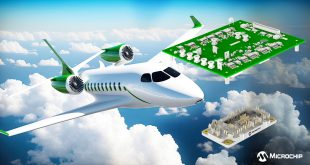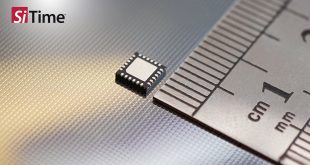GD Rectifiers design, manufacture and distribute customised semiconductor components and circuits. In this exclusive feature with CIE Magazine they explain the future ahead for space technology
Space technology today
 Today the power of miniaturisation is having a huge impact on satellites because technology is developing more capabilities into smaller packages than ever before, providing much smaller, cost effective satellites.
Today the power of miniaturisation is having a huge impact on satellites because technology is developing more capabilities into smaller packages than ever before, providing much smaller, cost effective satellites.
The space movement is becoming global and more countries than ever before are within reach of it. Space technologies are playing a key role in the development of: climate, peace, security, energy issues and environmental discoveries. The space movement is benefiting the planet, not just now but for generations to come.
Semiconductors used in space
Semiconductor circuits used in space operate in a very hostile environment. The industry demands extreme operating requirements to safeguard astronauts in the event of temperature variations, acceleration changes and radiation exposure.
Aerospace semiconductor products need to be designed and manufactured to stringent industry standards because of the difficulty of conducting in-service repairs on extensive operating systems.
Most semiconductor circuits are required to be screened to MIL-PRF-38534, class K, to be used in the space industry. They are used in various space applications, such as satellites and manned space flights. Circuits are typically used on manned space flight missions, such as the space station, as well as unmanned satellites and CubeSats.
Semiconductors play a key role in space technology. Today, we rely heavily on satellites for communications because they help generate television photographs, calls and a wide variety of communication signals.
Materials used in space need to possess the following qualities: strength and stiffness. It’s crucial that the materials used to build the satellite must not bend or break under immense forces otherwise a failure could compromise the mission. It has been documented that the launch alone can apply up to three times the force of gravity which means that each component will weigh up to three times as much as it would on Earth, highlighting the need for strong and durable materials.
Challenges
One of the main challenges of space exploration is sustainability, in particular pollution from debris that comes from old satellites, launch vehicle stages and collisions. There is no nationally owned sector of space, instead it is all shared. This makes the sustainability of space hard to maintain because everyone shares the same responsibility, where one mission might be sustainable another might not.
Emerging trends
Historically, space launch vehicles have not been used as efficiently as they should, they tend to only get used once and are often disregarded after the initial flight. The industry is now looking at designing improved and reusable space launch vehicles which could dramatically reduce costs and increase our access to space.
Smaller space vehicles have a lot of potential, and using multiple smaller satellites can reduce the likelihood of a failure.
One of the most exciting and emerging trends in space is the development of global communications and broadband, the widespread use of smaller satellites will help make this happen.
Future Predictions
The future of our planet and life as we know it will be even more heavily reliant on space exploration in years to come. A planetary shift with a global emphasis on sustainability needs to take place in order to solve the challenges facing the industry.
The future will see large numbers of vehicles taking people into space and on high speed journeys around the planet. This could lead to a new generation of exploration including space day trips, holidays and even events such as weddings. It could also provide the first opportunity for human journeys to Mars, to an asteroid and possibly a return to the moon.
Earth will benefit from further exploration; we’ll develop a better understanding of the climate to universal broadband, which could generate billions to the global economy and stimulate further interest and development.
Space science will continue to develop and we could find new planets around other stars, potentially showing signs of organic material and identifying other resources in our solar system. The most exciting development to unravel would be finding signs of actual life outside our planet, the possible discoveries are endless but they will only be uncovered if we spend more time in space.
GD Rectifiers is one of the UK’s leading distributors of power electronic components, as an ISO 9001:2015 registered company, they supply semiconductors to over 800 companies in the UK. GD Rectifiers have serviced the rail, medical, industrial, electronics, aviation and automotive industries for over five decades.
They specialise in designing and manufacturing standard and custom built heatsinks, power assemblies, selenium rectifiers, silicon rectifiers, suppressors, inverters and regulators. They also distribute semiconductor components for the world’s leading semiconductor manufacturers such as IXYS, Westcode, Semikron, EDI, Mersen, Sirio, Eaton Bussmann and Ocram throughout the UK and Europe.
 CIE Components in Electronics
CIE Components in Electronics




